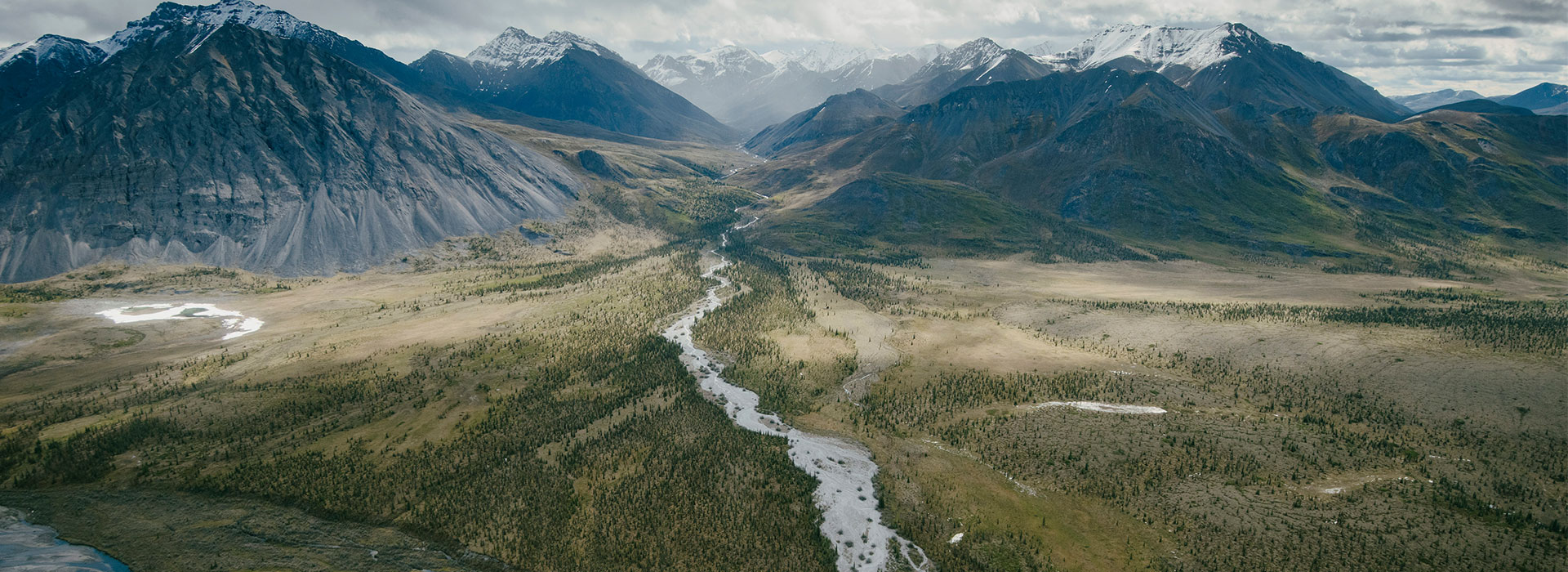A New Plan For The Land
By Amelia Arvesen

Under President Joe Biden, public lands and the climate have a bright future, environmentalist sand advocates say. Climate and the economy are top priorities for the 46th president, which sets the stage for the outdoor industry’s engagement in the making of policies and reminding the administration of the economic power of outdoor recreation.
“When you look at how to get the nation back on its feet and the economic opportunities, outdoor recreation squarely fits in that rubric,” says Nicole Vasilaros, who leads policy development and advocacy strategy for the National Marine Manufacturers Association (NMMA).
There’s already momentum for outdoor recreation. One highlight from the last four years under President Donald Trump was the passage of the Great American OutdoorsAct in June 2020. The historic bill includes permanent funding for the Land and WaterConservation Fund and filling the $12 billion infrastructure backlog through the Restore Our Parks Act. Plus, outdoor recreation has been counted by the Bureau of Economic Analysis to be 2.1% ($459.8 billion) of the nation’s gross domestic product—with the possibility of ballooning even more as more Americans seek solace from the pandemic outside.
Therefore, outdoor organizations are keeping a close watch on Biden’s promises in order to stay involved and keep the administration on track. Here’s what they know is coming down the pike so far.
LAND DESIGNATIONS
On Jan. 27, Biden signed an executive order that signals his commitment to invest in clean energy and restore balance to public lands and waters. As part of the order, he halted new oil and gas leasing on federal lands and offshore waters; the Trump administration had offered more than 25 million onshore acres and 78 million offshore acres for sale during his four years.
Biden also put a moratorium on all oil and gas leasing in the Arctic National Wildlife Refuge, saving the vast swath of wilderness from drilling—for now. And lawmakers recently reintroduced the Arctic Refuge ProtectionAct, which would prevent extraction permanently if passed. Separately, Biden opened a 60-day review to examine how Trump shrunk Bears Ears and Grand Staircase-Escalante national monuments in Utah by 2 million acres.
Restoring the boundaries and enforcing protections would be a massive win.“We have a new president; we anticipate that he will make good on promises he has made to restore Bears Ears,” says Keala Carter, lead advocate and public lands specialist at the Bears Ears Inter-Tribal Coalition, at The Conservation Alliance breakfast during Outdoor Retailer Winter Online. “We are very hopeful that, in the next few months, there will be even bigger news for Bears Ears.”
The status of Alaska’s Tongass National Forest, which is the world’s largest intact temperate rainforest, is also under review by Biden. In 2020 Trump excluded the area from the Roadless Area Conservation Rule, which was enacted to prohibit roads from crossing forestlands.
Lastly, the Boundary Waters Canoe Area Wilderness in Minnesota is still under the threat of the proposed sulfide-ore copper mine, the Twin Metals mine. Several groups, including state Rep. Democratic Congresswoman, Betty McCollum, have requested that Biden take action.
30 BY 30
Along with hitting pause on new oil and gas leasing, Biden’s executive order includes guidance for the 30 by 30 plan—an ambitious goal to protect 30% of America’s land and 30% of its ocean by 2030 in order to preserve biodiversity, food supplies, and nationwide health. To start, the Interior Department has been directed to consult agriculture and forest landowners, fishermen, outdoor enthusiasts, sovereign Tribal nations, states, and territories, and other officials to note the priorities.
NMMA’s Vasilaros says it’s key for the outdoor industry to be at the table for those conversations so recreation and conservation continue to align. “We know that recreational activity is consistent with conservation,” she says. “You can go outside, enjoy your natural resources, and do so in a way that conserves and enhances the environment.”
Outdoor Industry Association (OIA) is of a similar mindset and appealed to the government’s purse strings in a letter sent to Biden on Jan. 27. The trade association and 28 member companies asserted their support of the initiative and noted that success is only possible if all levels of government and parties engage. They also mentioned how investing in the climate and the environment can fuel the industry’s economic power.
“One of our main messages is when the outdoors thrive, our businesses thrive,” says Rich Harper, OIA’s director of government affairs.If achieved, the 30 by 30 plan would strongly boost protections. According to the U.S. Geological Survey, only 12% of lands are permanently protected, and other studies show that about 23% of America’s oceans are protected.California has already pledged to the goal, with other states following suit. At least 50 countries have committed to the plan through the High Ambition Coalition, which officially launched in January and is co-chaired by CostaRica, the United Kingdom, and France.
ACCESS FOR ALL
Intersectional environmentalism has been at the forefront of minds as advocates peel back the layers of environmental racism and injustice. For Vasilaros, making recreation accessible includes rebuilding resilient infrastructure like roads and physical facilities as well as permitting systems and online resources. “We know that the products people are using outdoors are very advanced, so we want to make sure people have access to information and they know where to go and what areas are open,” she says.
In mid-February, OIA released its annual diversity, equity, and inclusion (DEI) progress report. The association created an internal DEI task force and hired an expert consultant to examine systems, policies, and strategies, and determine the extent to which they either promote or inhibit diversity, equity, and inclusion.
Goals for 2021 include more training and weaving DEI initiatives into all aspects of the organization. “It is our hope that together we can be a force to make sure the outdoors is for all,” wrote OIA Executive Director Lise Aangeenbrug.
Biden is also addressing climate injustice in disadvantaged communities. His Jan. 27 executive order on climate seeks to spur economic opportunity for communities “that have been historically marginalized and overburdened by pollution and underinvestment in housing, transportation, water and wastewater infrastructure, and health care.” Creating programs, councils, policies, and jobs are part of this plan.
By investing in renewable energy, Biden expects to create millions of family-supporting and union jobs in clean energy generation, land restoration, abandoned mine cleanup, advanced manufacturing, sustainable agriculture, and more, according to his executive order.
WHAT CAN THE INDUSTRY DO?
The greater industry’s engagement is para-mount to the success of these initiatives and plans, say Harper and Vasilaros. Writing letters, calling representatives, and signing petitions will continue to be meaningful. “It’s all our civic duty to contact our members of Congress and let them know what issues matter to you most,” Vasilaros says.
Harper also invites OIA members to testify at congressional hearings on behalf of the outdoor industry. Progress may not be immediately evident, Harper says, but the Great American Outdoors Act is a prime example of how years of bipartisan lobbying led to actualization.
“Advocacy is about building on top of all of these ideas, and they’re just an extension of each other,” he says.
Outdoor Retailer Magazine is made possible with sponsorship by:
